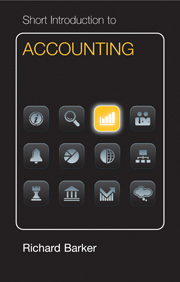Book contents
- Frontmatter
- Contents
- Figures
- Tables
- Introduction
- Part I Introduction to Part I
- 1 A guided tour of the financial statements
- 2 The need for financial information
- 3 Keeping track of economic activity
- 4 Summary of the foundations of accounting
- Part II Introduction to Part II
- Appendix 1 Glossary of accounting terms
- Appendix 2 Further reading
- Index
3 - Keeping track of economic activity
from Part I - Introduction to Part I
Published online by Cambridge University Press: 05 June 2014
- Frontmatter
- Contents
- Figures
- Tables
- Introduction
- Part I Introduction to Part I
- 1 A guided tour of the financial statements
- 2 The need for financial information
- 3 Keeping track of economic activity
- 4 Summary of the foundations of accounting
- Part II Introduction to Part II
- Appendix 1 Glossary of accounting terms
- Appendix 2 Further reading
- Index
Summary
Keeping track of economic activity
Chapter 1 presented an overview of the financial statements, which was extended in Chapter 2 with an intuitive exploration of why we have a cash flow statement, income statement and balance sheet and of how each of these statements is related to one another. In this chapter, the aim is to consolidate your understanding, which we will do by examining the underlying mechanisms of accounting, the so-called ‘double-entry’ system by which economic activity is captured and portrayed in a set of financial statements.
The notion that we are consolidating, rather than extending, understanding is actually very important. Financial accounting can be described as comprising a single model for measuring financial position and financial performance. This model, which is based on the double-entry method and which includes, as we have seen, the balance sheet, income statement and cash flow statement, is effectively all that there is to financial accounting.
- Type
- Chapter
- Information
- Short Introduction to Accounting , pp. 47 - 64Publisher: Cambridge University PressPrint publication year: 2011



